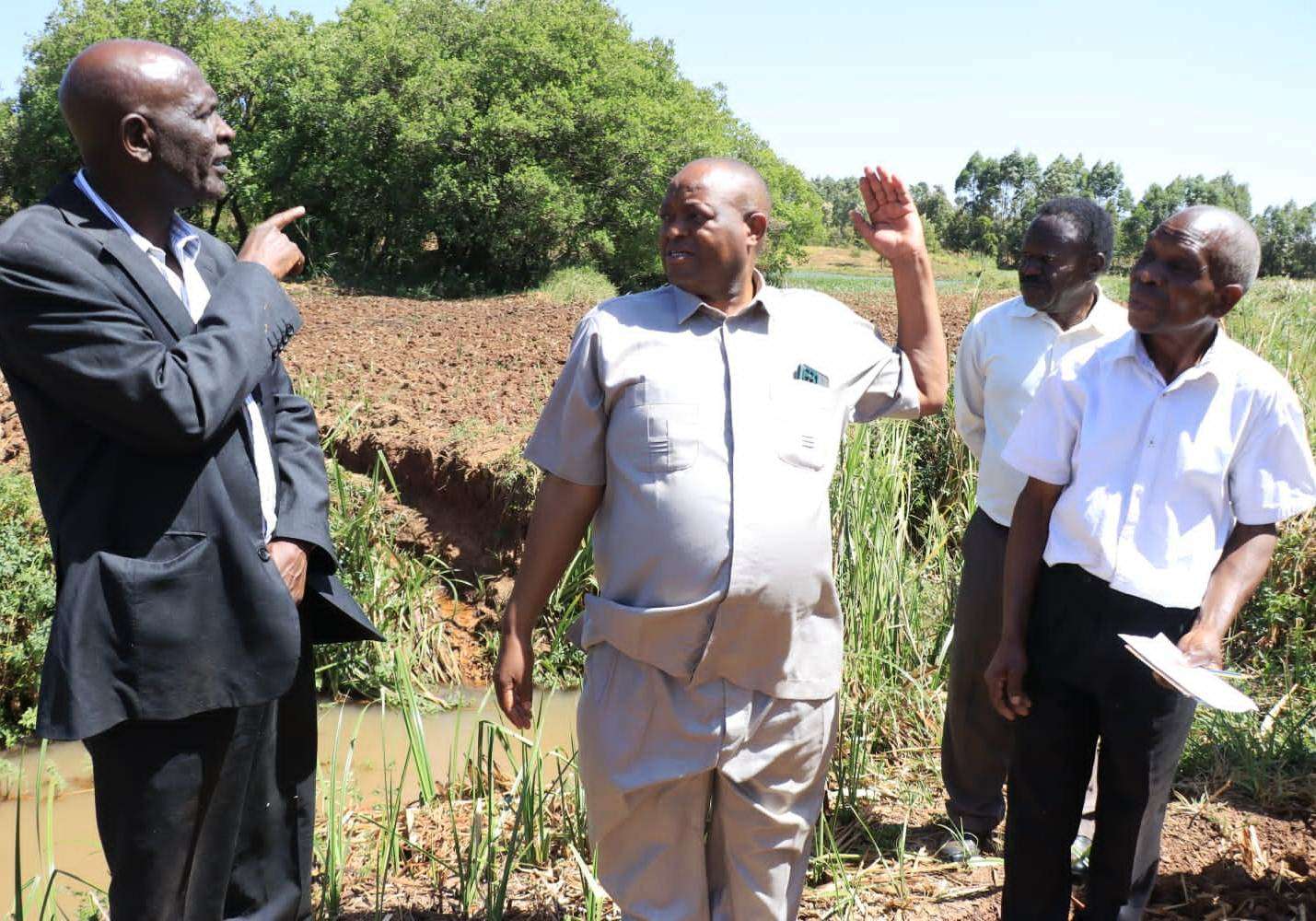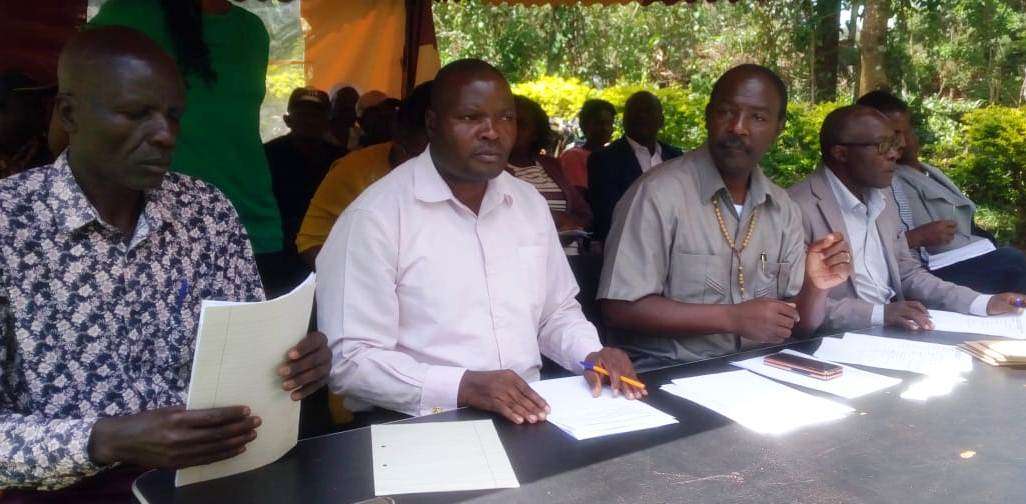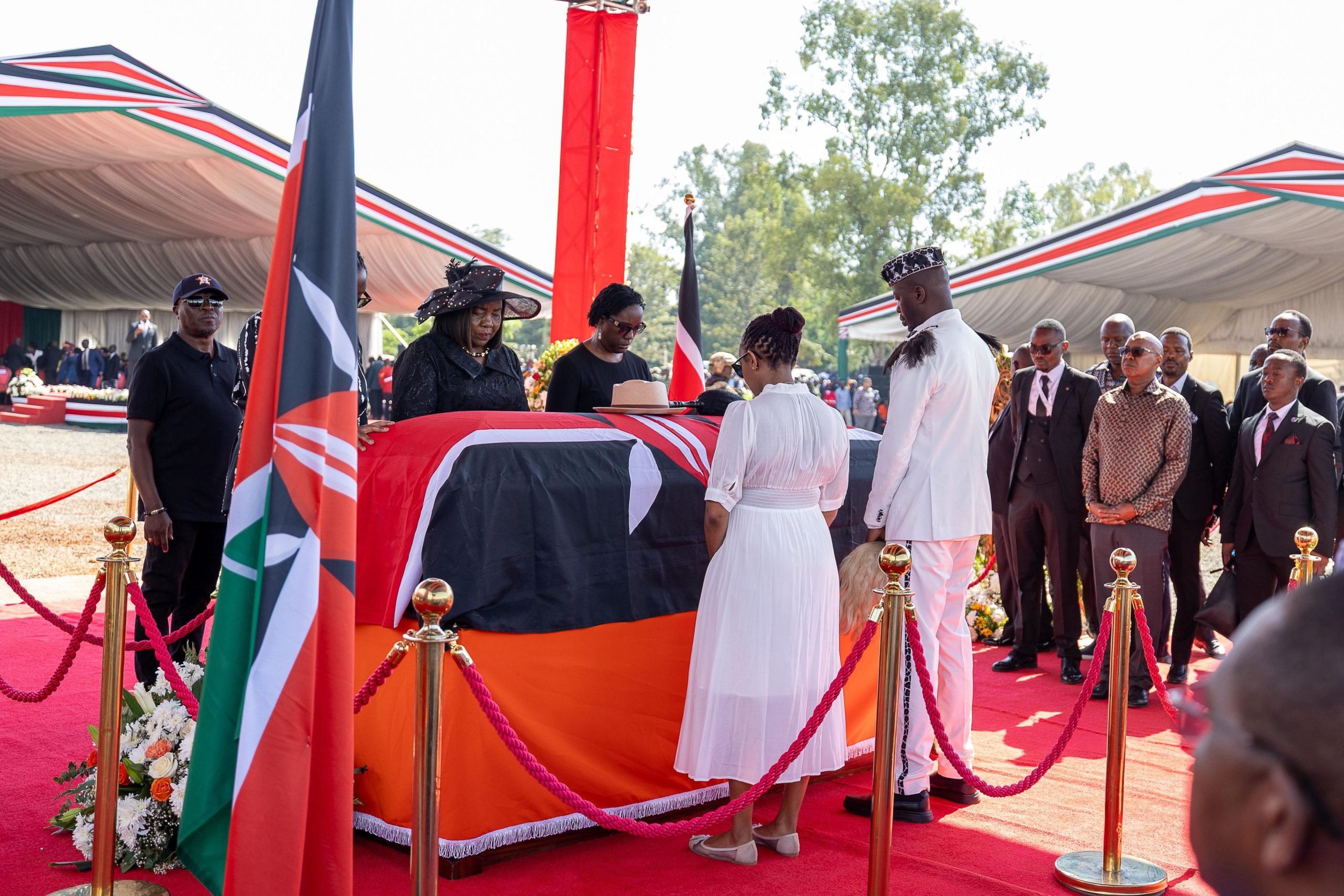Mzee John Isaya Mwavula, 74, a former mechanic/ driver with UNESCO and the UN and who lives about 5 Kms from the Saiwa Swamp National Park, has transformed himself into a full-scale environmentalist, turning about 90% of his 78-hectare farm into demonstration plots for the local community to learn about the conservation of the wetland
Of great concern is the imminent collapse of both the local and international tourism curcuit that is attached to the Saiwa Swamp National Park which is habitant to the semi-aquatic endangered De Brazza monkeys
According to the Trans Nzoia County NEMA Officer Isaac Mitei, there are 40 wetlands, including Kaisagat Small Farm which plays the role of mitigating the water supply together with storage of sediments, toxins that sweep nutrients into the Saiwa Swamp National Park
By David Musundi
President William Ruto could be the last person to have majored in his PhD studies at the Saiwa Swamp National Park within the Sinyereri wetland of the Cherangany hills, Trans Nzoia County. Why? This is because the surrounding environment and natural resources including soil, forests, and water catchment points are in intense danger of destruction from commercial activities.
It is argued that in the next five years, the local ecosystem faces a real threat of extinction if proper methods of protection are not implanted now. Of great concern is the imminent collapse of both the local and international tourism curcuit that is attached to the Saiwa Swamp National Park which is habitant to the semi-aquatic endangered De Brazza monkeys.
And as both national and county governments struggled to pass the message during World Wetlands Day on February 2 2023; to protect the mainstay of the Saiwa Swamp Park, one man out of the thousands of the population is keen to ensure the status of the local eco-system is maintained and improved.
Mzee John Isaya Mwavula, 74, a former mechanic/ driver with UNESCO and the UN and who lives about 5 Kms from the Saiwa Swamp National Park, has transformed himself into a full-scale environmentalist, turning about 90% of his 78-hectare farm into demonstration plots for the local community to learn about the conservation of the wetland.
Mzee Mwavula had earlier trained for a Diploma in farm management and tree nursery production from Chebororwa FTC in Elgeyo Marakwet County upon completion of his secondary education in the mid-1970s. Thus his concern is that if the present rate of destruction of the marshland through burning and agro-business activities continues unabated, then it could be the end of the PhD thesis in Botany after President Ruto’s landmark studies in the area.
And to boost President Ruto’s Kenya Kwanza’s Campaign Manifesto for afforestation Mzee Mwavula’s last born son Meshack Wekesa, a pupil at Elevation Academy, like his father has planted two Elgon Teek trees named after the Head of State and his wife Rachel. At times, the young Mwavula acts as the guide in absence of his father and has memorized almost both scientific and traditional names of plants and animals on the farm. He also runs poultry and rabbit projects whose proceeds are used to pay for school fees.
After registering the Kaisagat Small Farm and Research Park and receiving a license from a KWS official Fred Lala in 2013, Mzee Mwavula faced several challenges from the start including mobilizing the community to protect the marshland totalling over 50 acres. To date, regrettably, only 8 acres of the community wetland have remained intact which according to Mzee Mwavula can hardly sustain the entire bio-diversity of the area.
Mzee Mwavula has also been instrumental in the local rainfall pattern to the extent of attracting farmers for alerts for their agricultural activities. He has lived to the fact that to be able to protect the wetland, good agricultural practices must be practised while sustaining the general farming methods.
Out of the endangered 26 Sitatunga Antelopes that inhabitated Kaisagat Small Farm Park, 18 had fallen prey to poachers as well as 2 Bushbucks that stood initially at 8. Luckily enough, 4 De Brazza Monkeys were not affected in his park which lacks the fence and is 1 Km away from the nearest power grid. At one time, he had to donate one of the monkeys to the Saiwa Swamp National Park for cross-breeding.
According to the Trans Nzoia County NEMA Officer Isaac Mitei, there are 40 wetlands, including Kaisagat Small Farm which plays the role of mitigating the water supply together with storage of sediments, toxins that sweep nutrients into the Saiwa Swamp National Park. Standing between 1800m and 1900m above sea level, the area is supplied with water from the Sinyereri River, a tributary of the Nzoia River that culminates in Lake Victoria. Mr Mitei in an article published recently in the NEEMA newsletter said: ‘’ He (Mwavula) aims to turn his farm into a research centre where farmers can be educated on how to change their perceptive and attitude towards wetlands and environment in general’’.
The locals have known Mzee Mwavula for the last twenty years as a conservationist, a culturist, an environmentalist, a historian and a tourist while others have famed him as a herbalist, an ordinary farmer and a game ranger. Within the conservancy, there is a shrine where worshipers are charged Ksh 20 each for camping as a way of thanksgiving to God. Visitors can also hold prayers at the site named Prayer Mountain.
‘’The Mountain is like the Shamba of Eden where Adam and Eve were forbidden from eating fruits’’, he said adding the late ACK Bishop Alexander Muge paid homage to the shrine. Mzee Mwavula says the plot boasts of several medicinal plants like Alvero, hard and soft wood spanning over 20 years, flora and fauna, Miraa and fruits. Carbon was also produced and exported to the US.
The old man has defied all the odds that the endemic Elgon Teak trees cannot survive in dry land by cultivating more than 200 trees on his land. From the various shrubs, treatment for more than 40 diseases has been detected including Asthma, snake bites and wounds. There is a climbing plant called Kasa ya Mbongo from DR- Congo which is used to cross rivers in times of flooding. And for Scouts, there is a wood that can ignite a fire when fully dried. A story is being told of a German Morgan Katha who after being treated for Asthma by an old man has been sending him at least US 50 dollars every after three months for a successful dose.
This has seen man build links with countries such as Britain, Germany Sweden and Israel. It is estimated that over 4000 people have visited the site since its up-grading to a conservancy. Before the outbreak of Covid-19, Mzee Mwavula used to earn at least Ksh 1000 per day from the sale of products such as composite manure, fruits, vegetables and fish from the farm but he has since been forced to invest more in beekeeping, poultry and dairy farming.
And when he had just resolved to do away with his conservation park and replace it with traditional maize growing, a Kenyan journalist Joe Musundi visited him and gave hope of partnering with global investors to save the local bio-diversity. Kenya is a signatory to the Word Protocol on the environment and according to the Environment Management and Coordination of Act 1999 and the subsequent policy, the government should seek to secure and ensure the benefits of wetlands for posterity, provide the framework for mitigating and tackling the diverse challenges to sustain wetlands eco-system for the live hood of the community and conservation of the biodiversity.
Trans Nzoia County Commissioner Mathews Rioba dispatched his team to the ground where they assessed the damage and warned against further encroachment with the CEC for Environment Patrick Gacheru saying the legislation protecting wetlands must be enforced to the letter. The 2015 Parliamentary Act on Environment outlaws the cultivation of at least 30m from wetlands and 60m from river banks.





